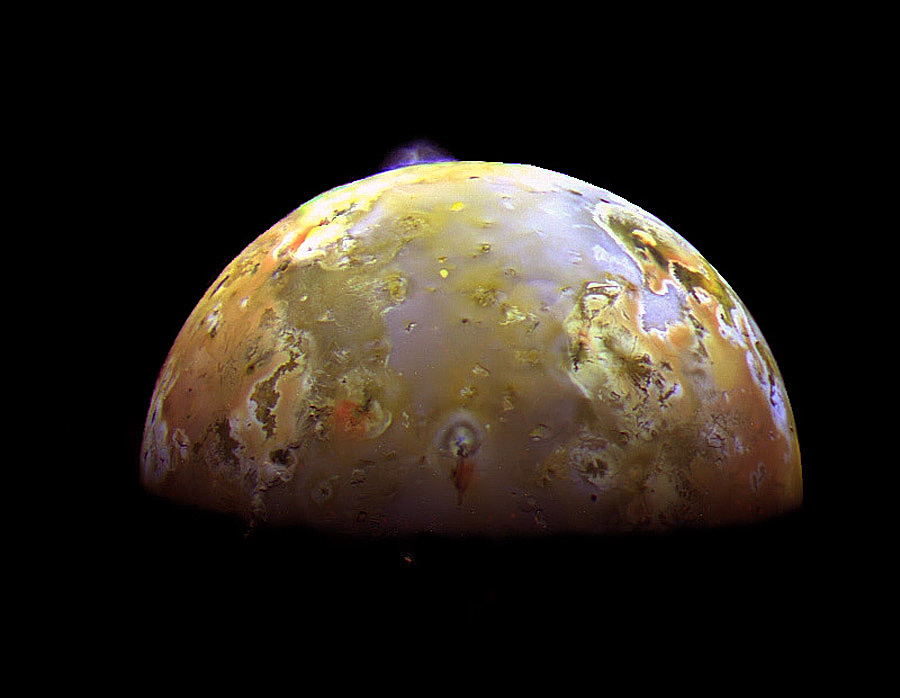 (follow the link to the site and click the pic there for full-size awesomeness and detailed insets) Quoth APOD:
(follow the link to the site and click the pic there for full-size awesomeness and detailed insets) Quoth APOD:What's happening on Jupiter's moon Io? Two sulfurous eruptions are visible on Jupiter's volcanic moon Io in this color composite image from the robotic Galileo spacecraft that orbited Jupiter from 1995 to 2003. At the image top, over Io's limb, a bluish plume rises about 140 kilometers above the surface of a volcanic caldera known as Pillan Patera. In the image middle, near the night/day shadow line, the ring shaped Prometheus plume is seen rising about 75 kilometers above Io while casting a shadow below the volcanic vent. Named for the Greek god who gave mortals fire, the Prometheus plume is visible in every image ever made of the region dating back to the Voyager flybys of 1979 - presenting the possibility that this plume has been continuously active for at least 18 years. The above digitally sharpened image of Io was originally recorded in 1997 from a distance of about 600,000 kilometers. Recent analyses of Galileo data has uncovered evidence of a magma ocean beneath Io's surface.Regarding that magma ocean, which I also mentioned last Moonday, Erik Klemetti had a good clarification last Wednesday on why "ocean" is probably not the best word to use to clearly communicate the nature of magma in Io's subsurface.
A couple of other loony images have come across the innertubz recently: the first is another APOD from May 12 of Enceladus and its cryovolcanism, which I had actually been intending to use for last week, until I got distracted by the Callisto/Callista differentiation. The second came from The Cassini Solstice Mission webpage this morning, and captures five of Saturn's moons in one frame!
Rhea (1,528 kilometers, or 949 miles across) is largest here and is closest to Cassini. Dione (1,123 kilometers, or 698 miles across) can be seen just above the rings near the center of the image. Tiny Prometheus (86 kilometers, or 53 miles across) is just barely visible in the rings to the right of Dione. Epimetheus (113 kilometers, or 70 miles across) is to the right of the rings, and Tethys (1,062 kilometers, or 660 miles across) is on the extreme right of the image.I've linked the full-size image here; the only one that might be difficult to spot is Prometheus, which looks more like a tiny bump on the ring plane, rather that a moon, just to the right of Dione.










No comments:
Post a Comment